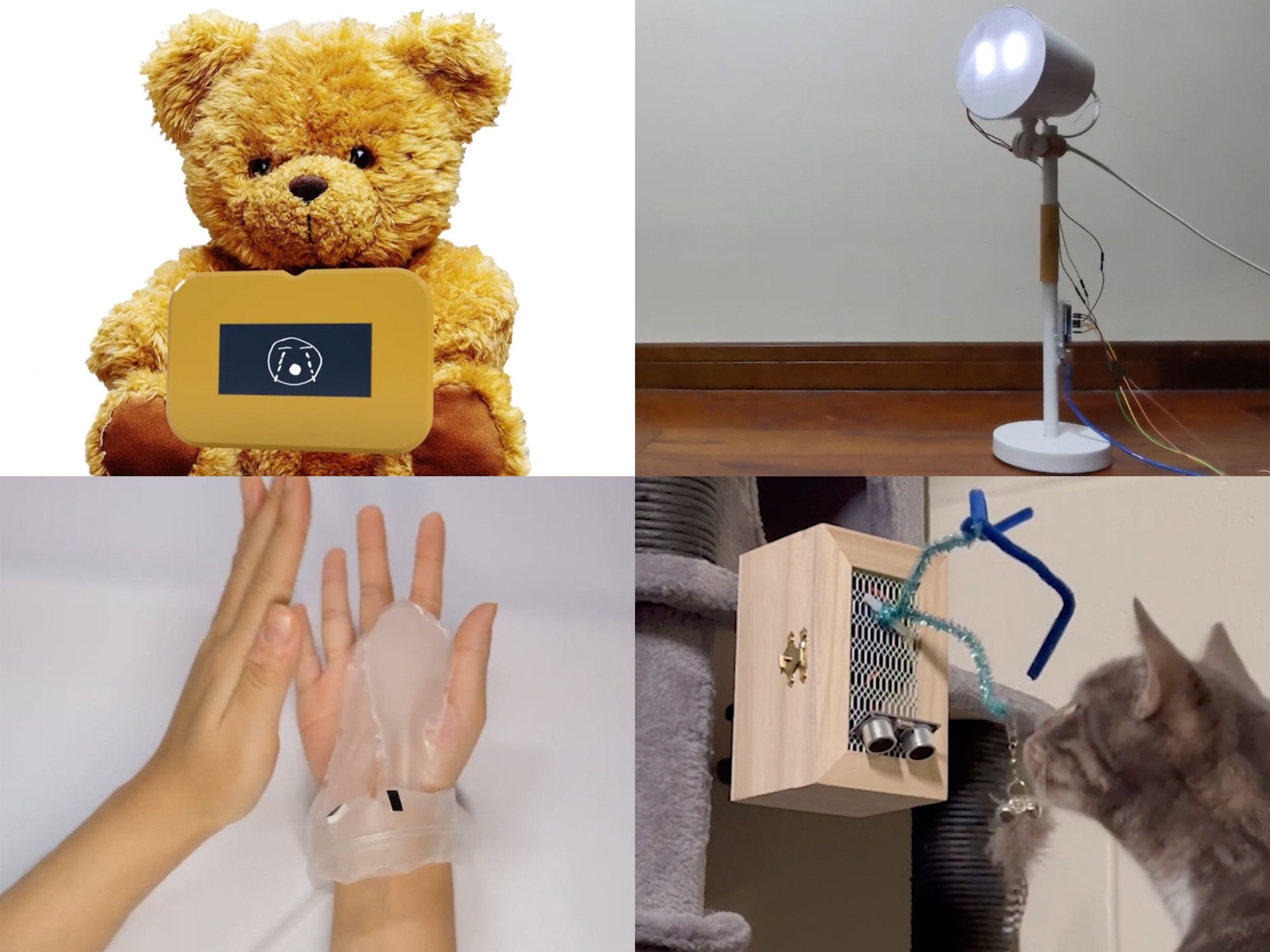Cat Toys, Toaster Bots, and Scolding Lamps

The 2023 ACM/IEEE Human-Robot Interaction Conference (HRI) is taking place this week in Stockholm, with the theme of HRI for all." It's a good theme, promoting diversity and inclusion, but it's also a good reminder that all robots have (or should have) some thought put into how they interact with humans. HRI isn't just for social robots. Even the most industrial of industrial robots, the lights-out manufacturing sorts of things that may never see a human while operating unless something is (or is about to be) very very wrong, still have to be set up and programmed by a human. And those humans are happiest when engineers remember that they exist.
Anyway, there will be a bunch of interesting research presented at HRI (the proceedings are already online here), but to kick things off we're taking a look at the annual HRI Student Design Competition, which is always creative and fun.
The theme for this year's Student Design Competition is Affordable Robots. Student teams are asked to create and describe a scenario with robots/agents that are affordable and have a real-life utility in society. More specifically, we are looking for affordable, impactful, scalable, and reliable use cases with real-world application potential. Since the theme of this year's conference is HRI for all," we also recommend that students think about inclusion and diversity in HRI in terms of geographical inclusion (both for the developed and developing world), gender inclusion, ethnic inclusion, disability, equity, etc. related to this theme.
This combination of affordable" and real-life utility" is especially challenging, since robots are by nature not affordable at all, and utility (in the sense of functionality that justifies their cost) is an elusive goal, which is why this is exactly the kind of problem you want students to tackle. There are 20 entries this year, and we can only share a few of them, but here are five that we thought were particularly interesting.
Aimoji: An affordable interaction kit that upcycles used toys as companion robotsWhen a child wants to talk with a toy, usually it is a one-way interaction, with the child imagining the toy's responses. Our design enables every toy to have a two-way interaction using our low-cost interaction kit. The reaction of the toy is based on a motion sensor that triggers the toy to respond to the child through a screen attached to the toy. Through this method, every child can experience human-robot interaction in an affordable way. There can be as many robots as the number of toys.Toubot: A pair of wearable haptic robots linking left-behind children and their parents emotionally
Children who are left behind have more mental problems than their urban peers because they have fewer instant emotional interactions with their parents. In order to solve this, we propose a pair of wearable soft robots that strengthen their emotional bond by enhancing instant nonverbal interactions.Internet of robotic cat toys to deepen bond and elevate mood
Pets provide important mental support for human beings. Recent advancements in robotics and HRI have led to research and commercial products providing smart solutions to enrich indoor pets' lives. However, most of these products focus on satisfying pets' basic needs, such as feeding and litter cleaning, rather than their mental well-being. In this paper, we present the internet of robotic cat toys, where a group of robotic agents connects to play with our furry friends. Through three iterations, we demonstrate an affordable and flexible design of clip-on robotic agents to transform a static household into an interactive wonderland for pets.Labo is watching you: A robot that persuades you from smartphone interruption
The endogenous interruptions of smartphones have impacted people's everyday life in many aspects, especially in the study and work areas under a lamp. To mitigate this, we make a robot that could persuade you intrinsically by augmenting the lamp on your desk with specific postures and light.Toaster bot: Designing for utility and enjoyability in the kitchen space
Toasting bread is a seemingly mundane task that people perform on a daily basis, whether in a private kitchen area or in a communal dining space. This paper presents a robotic toaster, or toaster bot," that is designed with animated movements to enhance the toast-making experience, not only by assisting in completing the task itself but also by acting as a playful entity with whom users may interact.